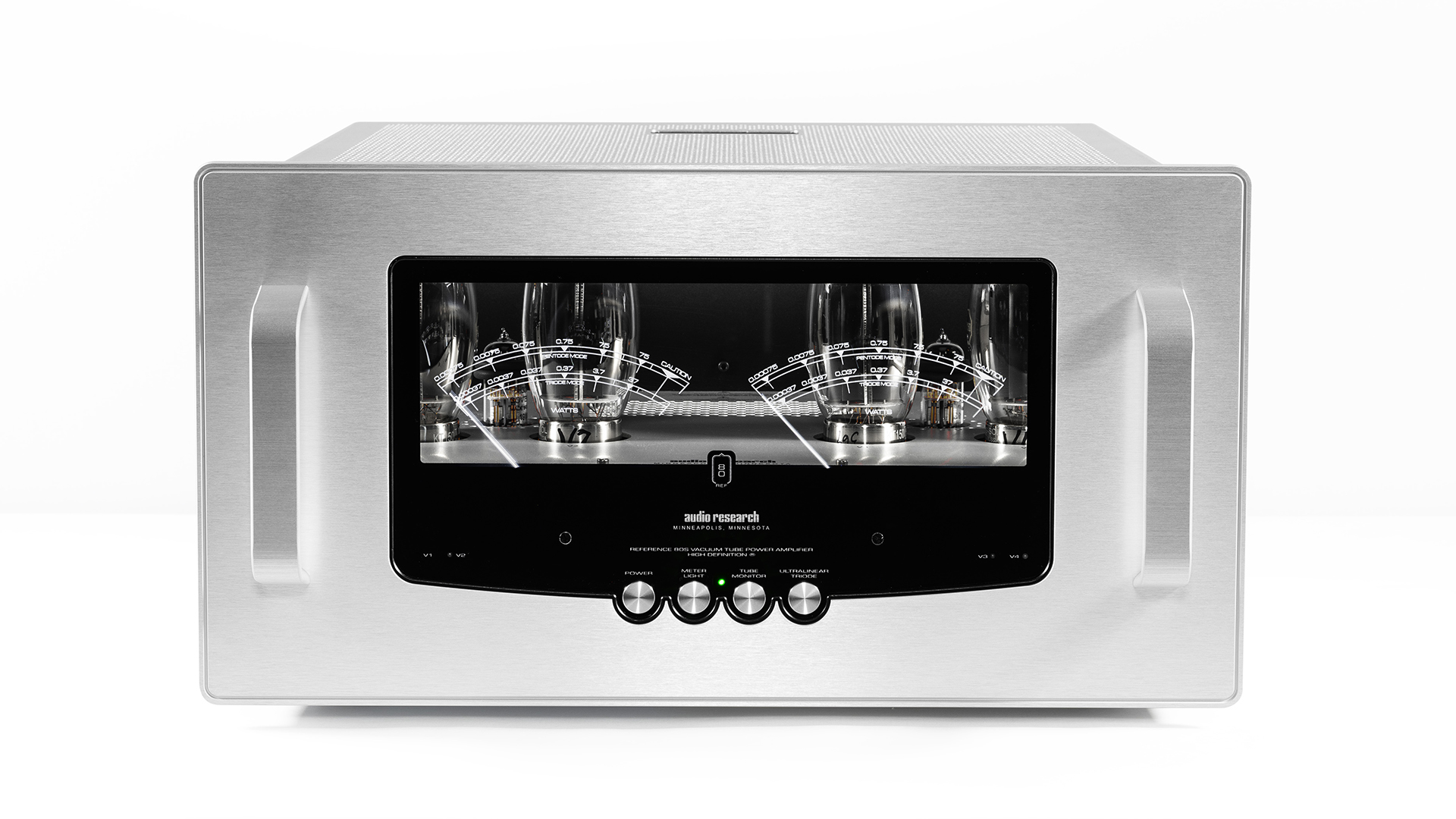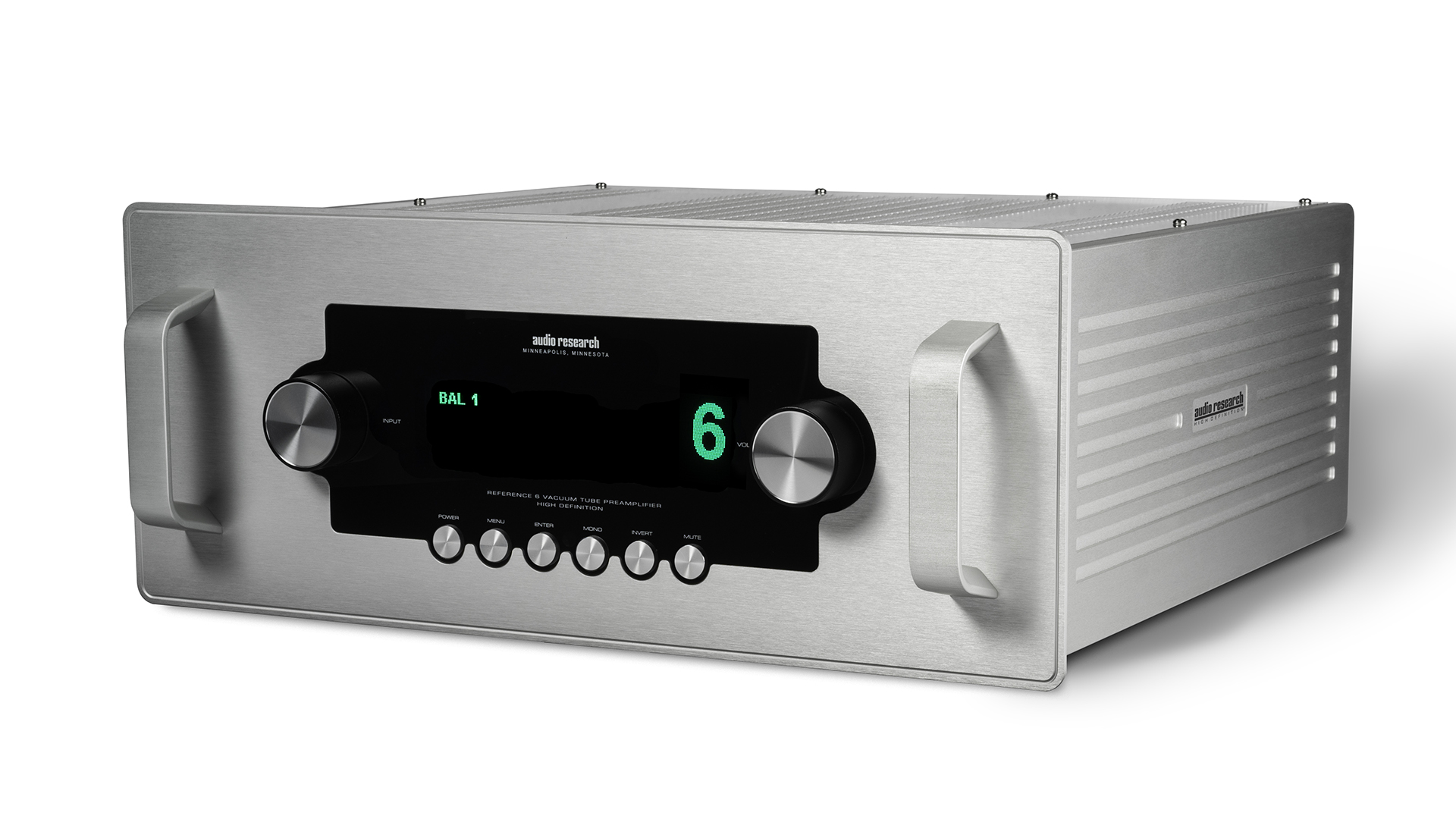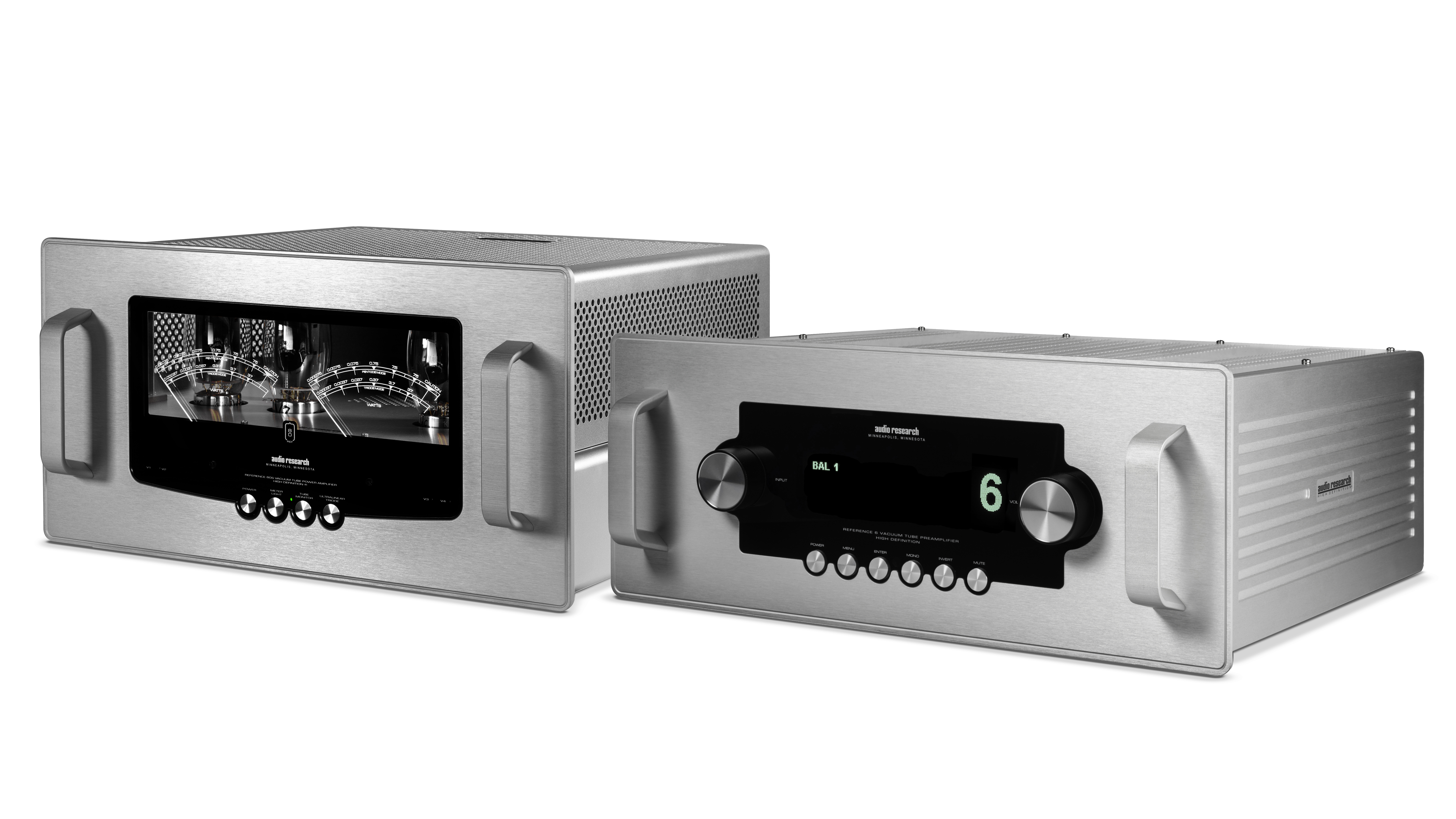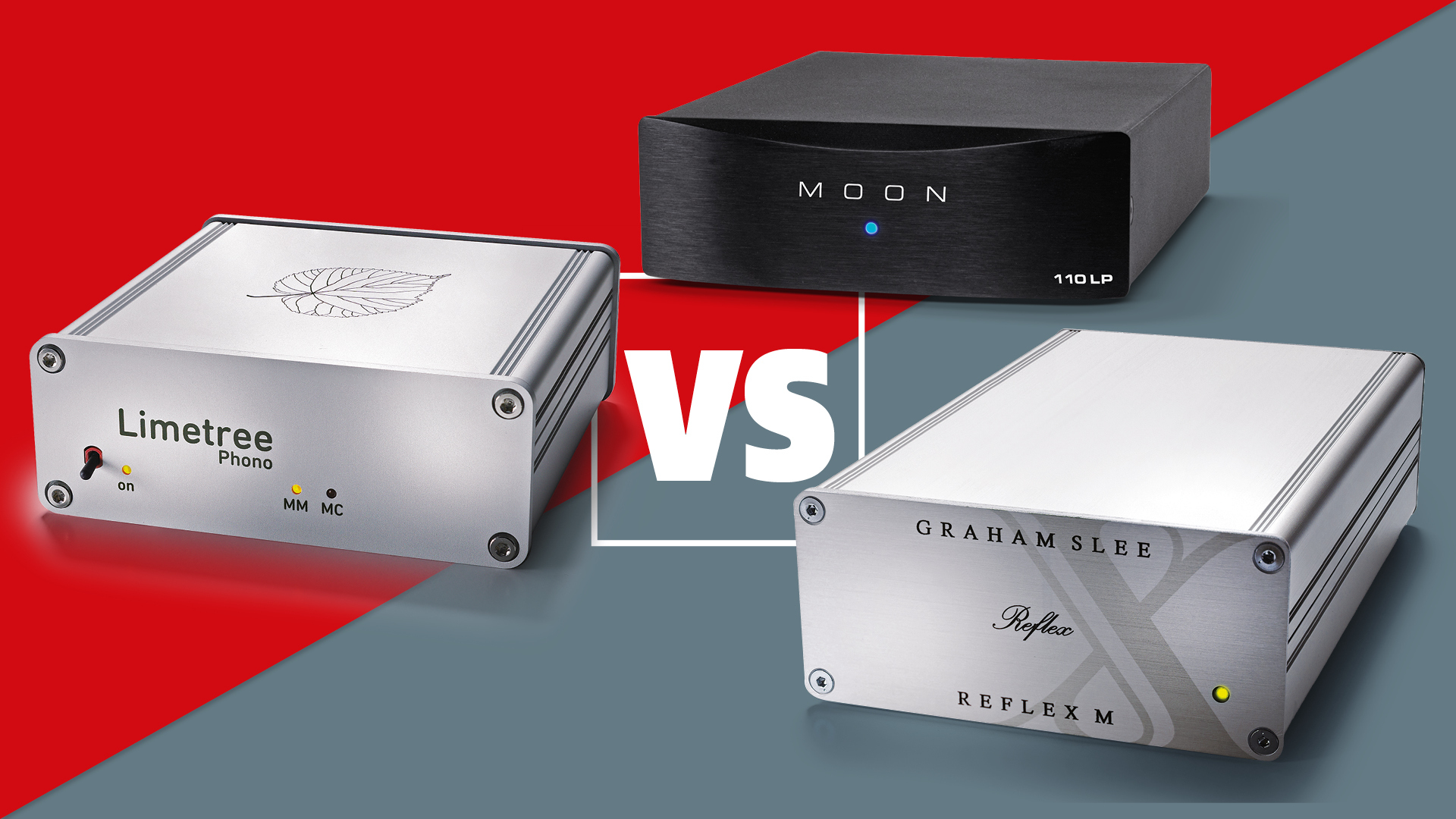What Hi-Fi? Verdict
A superb performer and easily one of the best amplifiers at this price
Pros
- +
Impressive transparency and subtlety
- +
Expressive dynamics
- +
Reassuring build
Cons
- -
Power amplifier needs careful partnering with speakers
Why you can trust What Hi-Fi?
Audio Research was founded in 1970. At that point, transistors had already taken over the world of electronics, leaving valves to be seen as outmoded and old-fashioned. We respect the fact that the Minnesota-based brand stuck to its principles, believing that valves offered the best sound quality even when pretty much every competitor had long moved away from that tech. So here we are, half a century later, taking a look at one of the company’s pre/power amplifiers and it remains fully valve powered. We approve.
The Reference 6SE preamp/Reference 80S power amp combination lands around halfway up Audio Research’s amplification range, and we feel it really gives a good idea as to what the brand is about.
Build

While we’ve long admired the company’s functional approach to aesthetics, we're still pleased it has found a way to update the appearance of its products to the point where they almost look stylish. The Ref 6SE preamp presents a clean and uncluttered face to the world with a lovely simple control layout and impressively clear display.
While that display looks the same as the ones the company has been using for decades, it’s still plenty large and easy to read from a distance. It's flanked by two rotary dials that feel precise and intuitive in use. Used in combination with the front panel control buttons it’s simple to work through the preamp’s various set-up menus.
As with the partnering power amplifier, the Ref 6SE’s casework feels well-made and robust. This is the kind of kit that feels like it’s designed to last for decades, which is pleasingly reassuring every time we use it.
Take a look through that transparent acrylic lid and you’ll find six 6H30 valves in the Reference 6SE’s audio stage with a 6550WE and another 6H30 used in the power supply.
It is handy that the Reference 6SE also has a counter to keep track of valve use. The 6H30s have an expected life of around 4000 hours while the 6550WE should last about half that. Valve life isn’t a precise science, but these are reasonable numbers. Elsewhere you’ll find that the circuit boards are packed with quality components and built to the standards demanded by the sky-high price.
The latest hi-fi, home cinema and tech news, reviews, buying advice and deals, direct to your inbox.

Moving onto the Reference 80S power amplifier sees a similarly functional but appealing unit. It uses four matched KT150 valves and a pair of 6H30s to produce a maximum of 70 watts of power per channel. There’s a small display on the back panel that indicates valve use. The KT150s should be fine for around 3000 hours, while the 6H30s have the same kind of life here that they do in the preamp (around 4000 hours).
Audio Research has also fitted an internal fan to keep things cool, which helps reliability. The fan can be set at one of two speeds depending on how hard the amplifier is worked and how hot the room is. Either way, both the preamp and power amplifier need plenty of ventilation space around them to ensure that they don’t overheat.
Unlike older designs where valve bias current could drift over time and would need readjusting, the Reference 80S has an autobias system that compensates for any such change, which makes long-term ownership that bit more fuss-free.
Unusually, this power amp can be used in two circuit configurations – Pentode and Triode – and switched between the two at the press of a front panel button. There’s a notable difference in sonic character between the two modes with Pentode delivering more in the way of power (that 70 watts per channel), grip and punch, while the Triode halves the power output but offers a more typical valve smoothness and richness.

Audio Research Reference 6SE preamp:
Inputs Balanced XLR x 4, single-ended RCA x 4
Outputs Balanced XLR x 2, single-ended x 2
Valves 6H30P dual triodes x 6, plus 6550WE and 6H30P in power supply
Dimensions (hwd) 20 x 48 x 42cm
Audio Research Reference 80S power amplifier:
Power output 70 watts per channel in pentode mode, 33 watts per channel in triode mode
Inputs Balanced XLR and single-ended RCA
Speaker outputs 4, 8, and 16 ohms
Dimensions (hwd) 26 x 48 x 47cm
We prefer the Pentode mode in our setup, but wouldn’t argue with anyone that chose Triode simply because the choice between the two ultimately comes down to taste and partnering system.
Both pre and power are shipped without their valves fitted. These have to be installed on unpacking. This isn’t hard to do but does involve taking off the covers on both products and pushing each valve into place. The positions are clearly marked so it’s hard to get it wrong. Make sure this is done before connecting to the mains otherwise there’s a strong risk of electrocution. We wouldn’t want to lose a reader that way! Of course, you could always get the dealer to do the job if you’re unsure.
While the Reference 80S’s general aesthetics match the preamp, its appearance is dominated by the two power meters. Audio Research calls them ‘GhostMeters’ thanks to the transparent acrylic faces. They look pretty cool, though aren’t really responsive or accurate enough to be of any real use. Still, we’d rather have them than not.
Overall though, both the Reference 6SE and Reference 80S remain no-nonsense, purist products. The Ref 6SE is a line-level preamp with no less than eight inputs split evenly between balanced XLRs and single-ended RCAs.

You’ll look in vain for a phono stage or headphones socket, though you do get a remote control. It’s a simple, logically-laid out frill-free handset that doesn’t even hint at being luxurious, but it fits the Audio Research brand ethos well. The Ref 6SE has two sets of preamp outputs, each offering a choice of balanced and single-ended connections. There’s a Record-Out too, also in balanced and single-ended flavours.
It comes as no surprise to find that the Ref 80S power amplifier is a fairly simple beast too. As with most valve power amplifiers there’s a choice of speaker outputs – labelled 4, 8 and 16 ohms – to ensure decent speaker matching. Start off by connecting to the output that matches your speaker’s nominal impedance most closely, but there’s no harm in experimenting. Let your ears decide.
The power amplifier’s maximum output of 70 watts per channel isn’t particularly impressive by high-end amplifier standards, so it makes sense to match to speakers with care. Try to go for something that’s relatively sensitive, say 88dB/W/m or upwards, if you have a larger room or like listening at higher volume levels. Even then, the Reference 80S will cope rather than excel at communicating the authority of a demanding recording like Stravinsky’s The Rite Of Spring. But partner with care in more modestly sized spaces and it still demonstrates a blend of sonic talents that’s hard to ignore.
Sound

With careful matching in mind, we’d like to remind you that any amplifier at this level positively demands a top-quality partnering system. Our digital sources are the Naim ND555/555 PS DR music streamer and Linn Klimax DSM equivalent, while analogue duties are looked after by a combination of the Technics SL-1000R/Kiseki PurpleHeart MC and Cyrus Phono Signature/PSX-R2 phono stage combo.
We use a range of speakers from our reference ATC SCM50 to Fyne Audio’s F1.8 and Dynaudio’s Confidence 20. While neither the ATCs nor Dynaudios are particularly sensitive at 85dB/W/m and 87dB/W/m respectively, the Reference 80S still manages to drive them to decent levels in our medium-sized test room.
First off, if you're expecting a stereotypical smooth and soft valve amplifier performance you won’t find it here. Sure, press the Ref 80S’s front panel button to switch it to Triode mode and the amplifier’s presentation certainly gains more in terms of warmth, richness and sonic ease, but it still doesn’t go as far as many we’ve heard. Stick to Pentode mode, as we do for the majority of our testing, and there’s little in the sound that suggests that you’re listening to a valve powered unit, bar unusually expressive low-level dynamics, natural tonal colours and a total lack of undesirable hard edges to the sound.
The 6SE/80S combination is essentially a neutral, transparent and accurate performer. It digs up plenty of detail when we listen to Arvo Pärt’s Tabula Rasa, but perhaps more impressively arranges all that information into a cohesive and musical whole. This is a piece of music we use often, but rarely have we heard an amplifier give a rendition where the musicians are so convincingly placed in the recording environment. Low-level details that define the recording venue are communicated with ease, making it perfectly possible to gauge the scale of the venue with reasonable accuracy, as well as pinpoint the precise placement of the musicians within that space.
Switch to Nick Cave and Warren Ellis’s latest set, Carnage, and this Audio Research pairing sounds right at home, its delivery sounding impressively unforced and organic here. We love the way it reveals the coarse texture of Cave’s voice and projects the sound with such clarity. This is a natural-sounding and subtle presentation that pushes the recording into the limelight rather than grabbing the attention itself. During the review process, we repeatedly find ourselves thinking about the music and production rather than noticing what the amplifier is doing. Only the very best products make us do that.
While not prioritising the rhythmic aspects of the music, this Reference 6SE/Reference 80S combo can certainly carry a tune and convey the momentum of the music well. Low notes are beautifully textured and impressively articulate with it. There’s a good amount of weight and power here, considering the relatively modest power output, and a pleasing level of composure that suggests control and organisation are straight out of the top drawer.
We listen to a wide range of music while testing and it never feels like this Audio Research pairing has favourites. Partnered with care, it’s as convincing with Bruce Springsteen’s hard-charging High Hopes as it is with the contemplative Found Songs by Olafur Arnalds.
Verdict

Sure, it won’t be hard to find an alternative with a more muscular sound, but little we’ve heard at this level delivers that with anything approaching the transparency and naturalness of this AR pairing. If you crave an unexaggerated and essentially honest rendition of a recording, this amplifier pairing must be heard.
SCORES
- Sound 5
- Build 5
- Features 4
MORE:
Read our review of the Burmester 088/911MkIII
Also consider Ayre Acoustics' KXR/VXR
How to choose and set up a stereo amplifier
What Hi-Fi?, founded in 1976, is the world's leading independent guide to buying and owning hi-fi and home entertainment products. Our comprehensive tests help you buy the very best for your money, with our advice sections giving you step-by-step information on how to get even more from your music and movies. Everything is tested by our dedicated team of in-house reviewers in our custom-built test rooms in London, Reading and Bath. Our coveted five-star rating and Awards are recognised all over the world as the ultimate seal of approval, so you can buy with absolute confidence.


